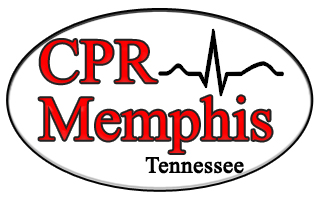MICROBIOLOGY
Unknown Number 109 and Alternative #4
Rebecca Blackmon
April 30th, 2013
General Microbiology I: BIO 203 604
Spring 2013
INTRODUCTION:
The way bacteria function and flourish is important, especially for people entering the Healthcare field, because it allows people to have a better understanding on how to work with or fight the bacteria. The General Microbiology I course taught students about many kinds of bacteria. Multiple procedures were practiced in the Microbiology lab to help students better understand how bacteria thrive, grow, and regenerate. These methods were used to determine which two unknown bacteria were present in the test tube.
MATERIALS AND METHODS:
The professor assigned the Unknown 109 test tube. Also, an Alternative #4 tube was given because the Unknown 109 tube was not allowing the gram negative to be shown on the nutrient agar. The procedures from the laboratory manual by McDonald were used to accomplish the tests needed to find the two unknown bacteria (3).
First, the bacteria mix inside the Unknown 109 tube was streaked across a nutrient agar plate using the quadrant streak technique. The quadrant streak helped spread out the bacteria and made it easier for the two different bacteria to make colonies that could be differentiated by the naked eye. This nutrient agar was incubated at 37° C for two days. The results were checked to see if two separate bacteria were growing. It looked over grown, so the same nutrient agar test was carried out several times. The results showed the nutrient agar was only allowing one bacteria to grow. A gram stain was taken from a sample of the bacteria growing on the nutrient agar. The gram stain turned out to be a positive rod gram stain.
All the following procedures were carried out on the gram positive rod unknown in this order:
- Methyl Red
- Casein (Milk)
- Glycerol
- Maltose
- Oxidase
An MSA and EMB test were performed using the Unknown 109 to try to promote the gram negative unknown to grow, but it did not work. The professor gave an Alternate #4 tube, so the gram negative unknown could be found. A quadrant streak technique was used on a nutrient agar plate using the Alternative #4. It was incubated for 2 days at 37° C. A sample of the bacteria growing on the nutrient agar was taken and used for gram stain test. The Alternative #4 was a gram negative rod.
All the following procedures were carried out on the gram negative rod unknown in this order:
- MacConkey
- EMB
- Methyl Red
- Simmons Citrate
- Urea
RESULTS:
Table I and Flowchart I list all the tests, purposes, results, and order the tests where done for the Gram positive bacteria using the Unknown 109 tube. Table II and Flowchart II list all the tests, purposes, results, and order the tests where done for the Gram negative bacteria using the Alternative #4 tube.
Table I: Gram Positive Rod Tests from Unknown 109 Tube
|
TEST |
PURPOSE |
REAGANTS |
OBSERAVTIONS |
RESULTS |
| Nutrient Agar | To separate the two unknown bacteria | Nutrient mixture | Cream color, large opaque circular colonies | Positive unknown colonies |
| Gram Stain | To find Gram reaction of the bacterium | Crystal violet, Iodine, alcohol, Safranin | Purple rods | Gram positive rods |
| Methyl Red Test | To find glucose fermentation products | Glucose, peptone, pH buffer, Methyl Red | Red solution | Positive |
| Milk Test | To determine if organism has casease to hydrolyze casein | Milk agar | Clearing around the growth | Positive |
| Glycerol Test | To test for fermentation of carbohydrates | Glycerol, peptone, phenol red (Durham tube) | Color change to yellow | Positive |
| Maltose Test | To test for fermentation of carbohydrates | Maltose, peptone, phenol red (Durham tube) | Color change to yellow | Positive |
| Oxidase Test | To determine if cytochrome c present | Oxidase reagent | Purple color | Positive |
Table II: Gram Negative Rod Tests from Alternative #4 Tube
|
TEST |
PURPOSE |
REAGENTS |
OBSERVATIONS |
RESULTS |
| Nutrient Agar | To create colony of Gram negative bacteria | Nutrient agar with Gram negative a | Cream color, small opaque circular colonies | Negative unknown colonies |
| Gram Stain | To find Gram reaction of bacterium | Crystal violet, Iodine, alcohol, Safranin | Red rods | Gram Negative rods |
| MacConkey | To detect if bacterium is an enteric and fermenter of lactose | Bile salt, crystal violet, neutral red | Pinkish red colonies | Positive, acidic |
| EMB | To detect if bacterium is an enteric and fermenter of lactose | Eosin and methylene blue | Colonies were green metallic sheen | Positive, acidic |
| Methyl Red | To find glucose fermentation products | Glucose, peptone, pH buffer, Methyl Red | Red solution | Positive, acidic |
| Simmons Citrate | To determine if bacterium can solely use citrate as source of carbon | Sodium citrate, ammonium phosphate, bromthymol blue | Green Medium | Negative |
| Urea | To detect if the bacterium has the enzyme urease | Urea, phenol red, peptone, sodium chloride, potassium phosphate | Yellow-orange solution | Negative |
Flowchart I
Unknown#109
Gram Stain (Positive Rod)
Gram Positive Rod Gram Positive Cocci
Bacillus cereus Staphylococcus aureus
Bacillus subtilis Staphylcoccus epidermidis
Enterococcus faecalis
Methyl Red (Positive)
Bacillus cereus
Milk Agar (positive) Glycerol Test (positive) Maltose Test (positive) OxidaseTest (positive)
Flowchart II
Alternative #4
Gram Stain (Negative Rod)
MacConkey and EMB Test (both positive)
Positive Negative
Escherichia coli Proteus vulgaris
Klebsiella pneumonia Pseudomonas aeruginosa
Enterobacter aerogenes
Methyl Red (Positive)
Positive Negative
Escherichia coli Enterobacter aerogenes
Klebsiella pneumonia
Urea and Simmons Citrate (both negative)
Positive Negative
Klebsiella pneumonia Escherichia coli
DISCUSSION/CONCLUSION
The correct identification for the gram positive bacterium was Bacillus cereus. The B. cereus was found using the solution in the Unknown 109 test tube. Originally, a sample from the Unknown tube was supposed to be inoculated on a nutrient agar plate using the quadrant streak technique. This was to allow the gram positive and gram negative to be spread out, creating separate colonies. This never occurred. Several nutrient agar plates where inoculated and two different bacteria never grew. Then, it was concluded that only one bacterium was growing on the nutrient agar, so a gram stain was performed. A gram positive rod was the outcome, ruling out the gram positive cocci. The Methyl Red test concluded positive for the presence of glucose fermenters. The Casein test concluded negative for the bacterium having casease to hydrolyze casein. This was an incorrect finding because B. cereus does have casease. The finding could have been incorrect because the clearing around the bacterium might not have been as clear for the tester to notice. The Glycerol and Maltose test showed fermentation for carbohydrates by changing the solution from yellow to red. The Maltose test showed positive, but the Glycerol test show incorrect results for negative. The two tests call for the bacterium to be in a liquid form when added to the test tubes, but the test was done from the bacterium being on an agar jell. The bacterium might not have mixed well with the Glycerol solution, creating an improper answer. Lastly, an Oxidase test showed positive for the bacterium having cytochrome c. This completed the search for the Gram positive rod: B. cereus (3).
Since the original Unknown test tube was not allowing the gram negative to grow, an Alternative #4 tube was assigned as well. That test tube only had a gram negative bacterium in it. The Alternative #4 tube was used to inoculate a nutrient agar plate using the quadrant streak technique. The gram negative bacterium grew on the agar and a gram stain was carried out. The gram stain showed a gram negative rod was present. Next, the MacConkey and EMB tests were performed to detect if the bacterium was an enteric and fermenter of lactose. They were positive and acidic. The EMB test produced green metallic colonies, which was a big flag that the bacterium might be Escherichia coli. The Methyl Red test was positive for the presence of glucose fermentation. The Simmons Citrate showed the bacterium cannot solely use citrate as source of carbon. The last test performed was the Urea test. The negative results explain that the bacterium did not have the enzyme urease, which breaks down urea. The bacterium did not produce an alkaline pH, but an acidic one. All of the test results came out correct, matching all the characteristic of E. coli (3).
Theodor Escherich, a German bacteriologist and pediatrician, first discovered E. coli in 1919. The bacterium was named after him since he isolated and found its components (2). E. coli is a gram negative rod shaped bacterium. It is most commonly found in mammals intestines. E. coli prefers the body’s warmer temperature and thrives off of breaking down the food in the intestines (4). The E. coli strain O157:H7 is the only known strain out of the hundreds discovered that can cause humans to become sick. The strain O157:H7 releases a toxin into the body cavities that initiates an illness in mammals (2).The Center for Disease Control and Prevention list a few precautions to help stop the spread of E. coli (1). The number one thing is to wash your hands. Always wash your hands after going to the bathroom, before working with food, and after coming in contact with animals. Try to avoid unpasteurized dairy products. Always wash vegetables and fruits before eating or preparing them. When cooking meat, use a thermometer to make sure the recommended temperature has been reached to ensure bacteria no longer existed in the food(1). Killing E. coli is simple because the never turn into a spore. They are easily killed by boiling the water they may be living in or using a basic sterilization process (4).
REFERENCES:
(1)
“E. Coli (Escherichia Coli).” CDC. Centers for Disease Control and Prevention, 29 Mar. 2013.
Web. 26 Apr. 2013. < http://www.cdc.gov/ecoli/ >
(2)
“Escherichia Coli: A Dangerous Bacterium or a Test Model?” Serendip Studio. Web. 26 Apr.
2013. <http://serendip.brynmawr.edu/exchange/node/76>
(3)
McDonald, Virginia. Thoele, Mary. Salsiver, Bill. Gero, Susie. Lab Manual for General
Mircobiology. BIO 203. St. Louis Community College at Meramec, April 2011.
(4)
Tortora, Gerard J. Funke, Berdell R. Case, Christine L. Microbiology: An Introduction.
9th ed. San Francisco: Pearson Benjamin Cummings, 2007.





